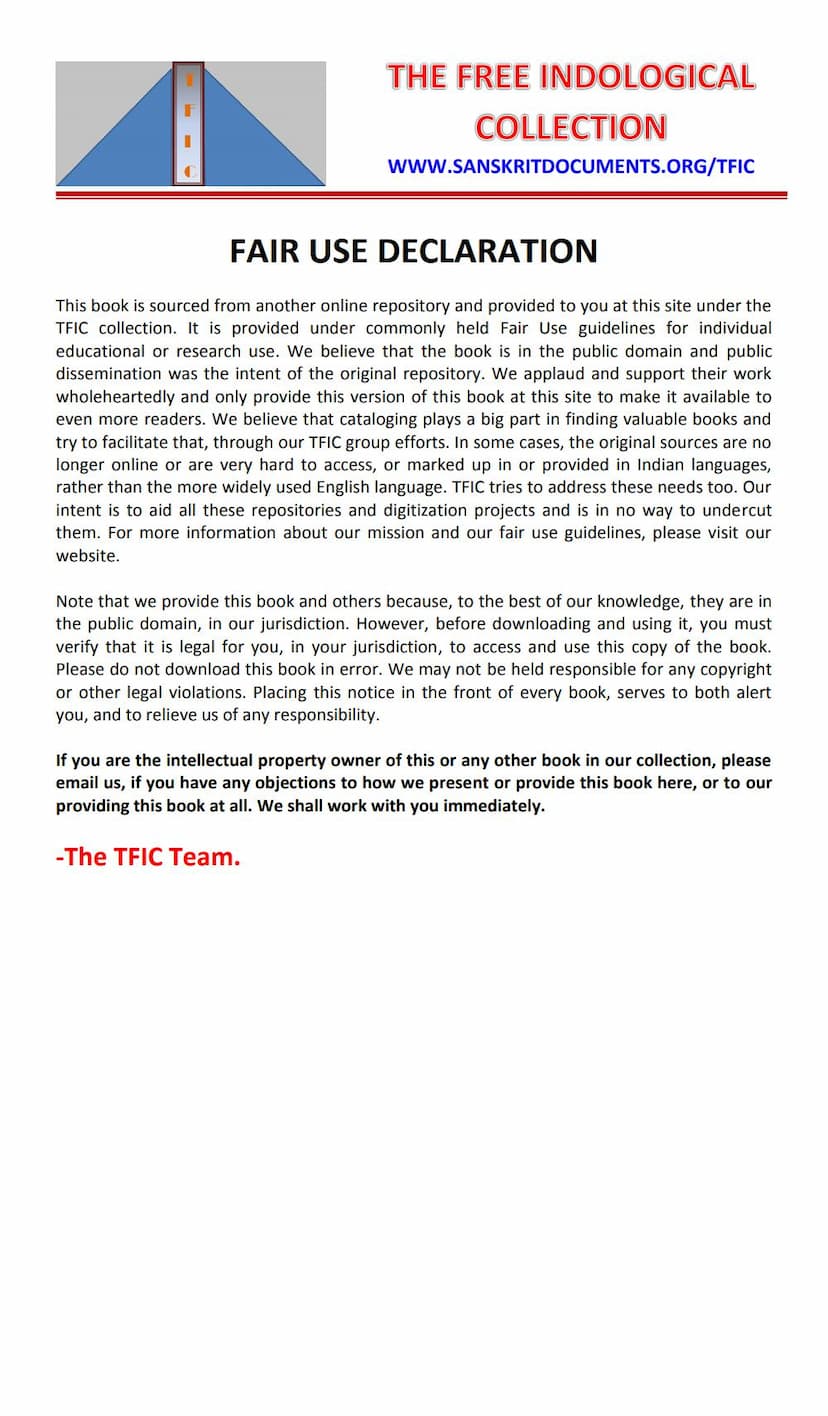Agam 14 Upang 03 Jivabhigam Sutra Part 02 Sthanakvasi
Added to library: September 1, 2025

Summary
The provided text is the second part of the Agam 14 Upang 03 Jivabhigam Sutra, authored by Kanhaiyalal Maharaj and published by A B Shwetambar Sthanakvasi Jain Shastroddhar Samiti. This summary focuses on the content as presented across the pages, which primarily details the various realms of existence and their characteristics within Jain cosmology, as described in the Jivabhigam Sutra.
The text, particularly in its later pages (pages 22-178 in the provided snippet), delves into the detailed descriptions of the seven Naraka (hell) realms. It systematically outlines:
The Structure of the Naraka Realms:
- The text meticulously describes the seven distinct Naraka realms, starting from the first, Ratnaprabha, and progressing down to Tamastama, the seventh.
- Each of these Naraka realms is described in terms of its names, dimensions (thickness/depth), and subdivisions.
- The thickness of Ratnaprabha is given as 80,000 yojana (80,000 yojan). Subsequent layers are detailed with their respective thicknesses, forming a layered structure of the hellish realms.
- The text explains the names of each of the seven Naraka realms (e.g., Ratnaprabha, Sharkara, Valuka, Pank, Dhuma, Tama, Tamastama).
The Naraka Avsas (Habitats):
- The sutra details the number of Naraka Avsas (habitats or dwellings for the hellish beings) within each Naraka realm. For Ratnaprabha, it's 30,00,000 (thirty lakhs). For Sharkara, it's 25,00,000, and so on, decreasing with each subsequent realm.
- The physical characteristics of these Naraka Avsas are described, including their shapes (circular in the middle, square on the outside) and their composition. They are depicted as being made of various materials like metals (iron, lead, silver, gold), gems, and other unpalatable substances.
- The immense size and scale of these Naraka Avsas are highlighted, often using comparisons to celestial bodies like the sun to illustrate their vastness.
- The text also details the "vacant spaces" (avakashantara) that exist above and below these Naraka realms.
The Narakas (Hellish Beings):
- The physical descriptions of the Narakas (hellish beings) are quite vivid. They are characterized by their extreme forms, often described as having bodies made of dense, hard, impure, and disgusting matter.
- Their sensory experiences are described as overwhelmingly painful. They suffer from intense heat, cold, hunger, thirst, and are constantly subjected to the consequences of their past negative karma.
- The text discusses the concept of "sampardayik" (belonging to a lineage or tradition) and how the Narakas' existence and experiences are intrinsically linked to their past actions (karma).
Leshya (Disposition of Mind):
- The text touches upon the concept of Leshya (mental color or disposition) in relation to Naraka beings. It mentions that Ratnaprabha has only Kapota leshya, Sharkara has both Krishna and Kapota leshya (with Kapota being more prevalent), Valuka has Krishna leshya, and so on, down to Tamastama which has Param Krishna leshya.
The Narakas' Sensory Experiences and Suffering:
- A significant portion is dedicated to describing the unparalleled suffering of the Narakas. Their bodies are depicted as being made of hellish substances, their forms grotesque and fearsome.
- They experience extreme sensations of heat and cold, which are described with analogies like being plunged into molten iron or enduring icy blasts.
- Their constant hunger and thirst are so intense that they cannot be satiated, further adding to their torment.
- The text details their suffering from past karma, the actions of other Narakas, and the influences of celestial beings.
The Narakas' Capabilities and Limitations:
- Despite their suffering, the Narakas possess some abilities, like the power of Vikriya (transformation). However, these transformations are often directed towards causing harm or are inherently painful.
- Their lifespan is also discussed, measured in "Palyopama" (a unit of time in Jain cosmology), which is astronomically long.
The Cycle of Rebirth:
- The text implicitly highlights the cycle of samsara (birth and death) and how beings' karmic actions in the universe lead them to such dire circumstances. It suggests that the Narakas' suffering is a direct consequence of their negative deeds in past lives.
The "Jiva" (Soul) in Different States:
- The text briefly mentions the concept of "Jiva" and its state of existence, differentiating between those in samsara and the liberated souls. It emphasizes that the cycle of life and death is governed by karma.
In essence, this part of the Jivabhigam Sutra serves as a detailed cosmological map of the hellish realms, explaining their structure, the nature of the beings residing there, and the extreme suffering they endure due to their past actions. It provides a stark, yet systematic, understanding of the consequences of karma within the Jain framework. The subsequent sections would likely continue to elaborate on other forms of life and their respective states of existence.